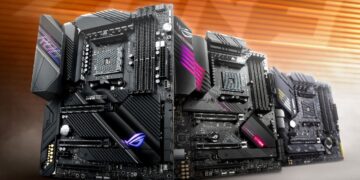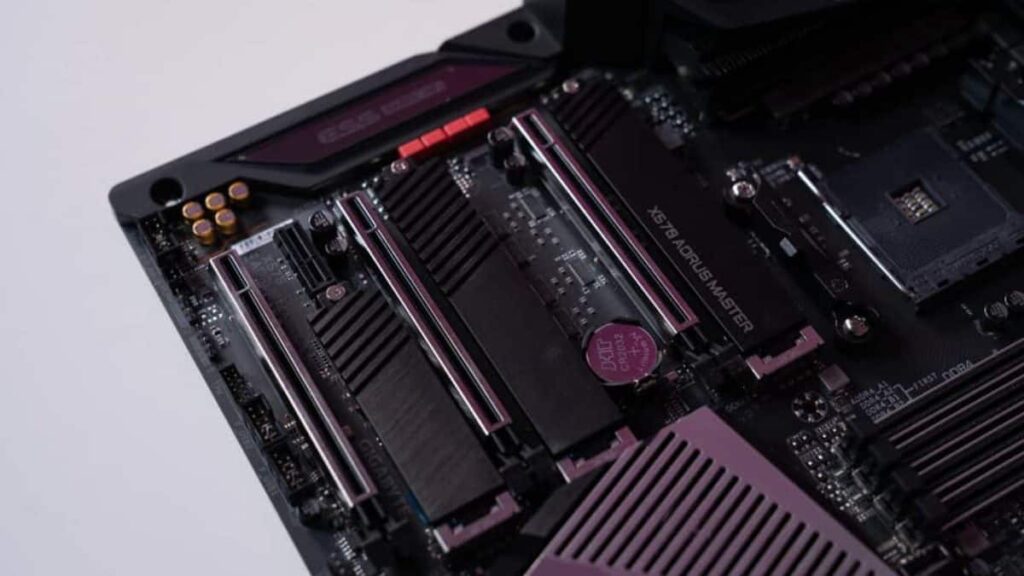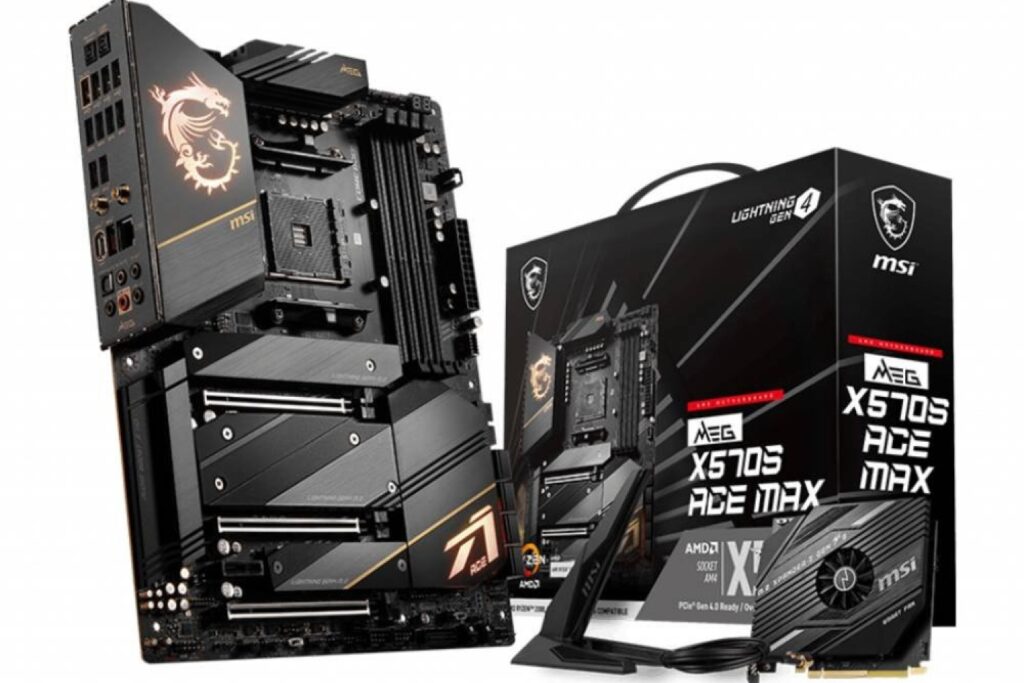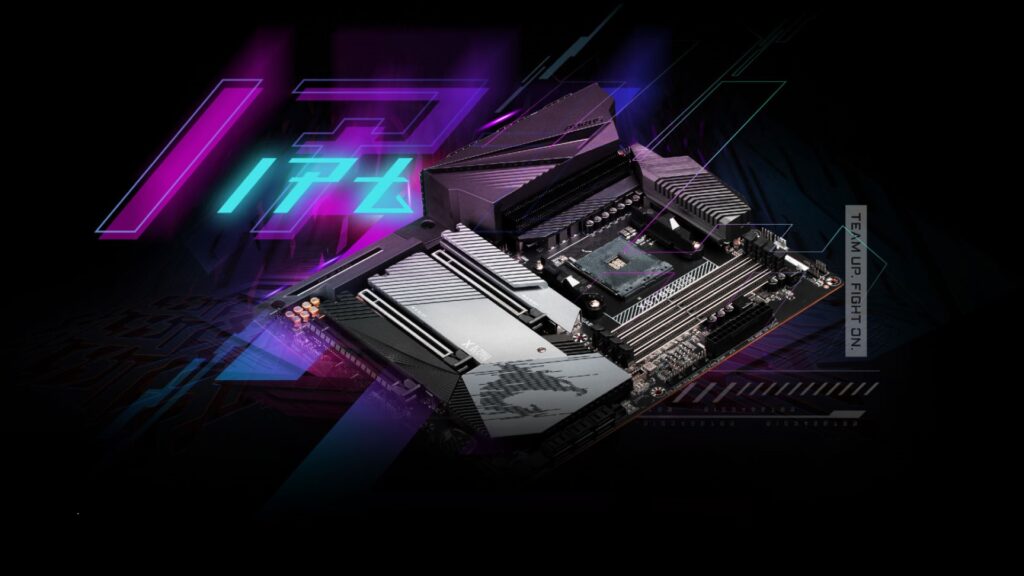AMD took its time with the B550 mainboards. The 500 series was only available with the more expensive and, at that time, often actively cooled X570 boards for a long time. As an alternative, many B450/X470 mainboards and even some B350/X370 boards can be equipped with the Ryzen 3000 Zen2 processors, but these do not support PCIe 4.0.
Ryzen 5000 doesn’t work with 300-series chips, but it does work with many 400-series boards that are already equipped with suitable UEFI updates. Even more, B3x0 boards have been made fit for Zen3 by AMD. This article will introduce the best motherboards for AMD Ryzen with B550 and X570 chipset; stay tuned.
B550 vs X570 – which board is right for me?
Not that different: the advantages of the boards with X570 are primarily the amount of available fourth-generation PCIe lanes – mostly, you get one M.2 slot with 4x PCIe Gen4 more than with B550. The drawback of early X570 boards, which was that a small fan had to cool the chipset, is no longer one: new boards (and all those with X570S in the name) use only the usual passive cooling.
The B550 and X570 have also converged in terms of price. However, on a certain price level: entry-level boards tend to use B550 and high-end boards X570. Those who want to buy a well-equipped motherboard given the AMD Ryzen 7 5800X3D coming out in April won’t go wrong with X570(S). After all, one can never have enough memory and upgrade options.
PCIe 4.0 for the midrange with restrictions
B550 – almost the same equipment as X570: For a lower price, B550 does offer a bit fewer features, but it delivers an excellent overall package not only for the mid-range. The price is also part of it, and it is pleasantly low with prices below 100 Euros. However, the X570 only offers full features.
The drawback of B550: the biggest restriction compared to X570 is the lower number of supported PCIe 4.0 lanes. B550 itself does not offer additional PCIe 4.0 connections, but it forwards the ones present in the Zen CPUs to a graphics card and an M.2 slot.
What about the future? Intel has already started the DDR5 era, and AMD has corresponding CPUs in preparation. Except for the Zen3 conclusion in the form of the Ryzen 7 5800X3D with a huge 96 MB cache, which is still released for AM4, AM4 will be over later in the year.
Also Read:
- 2022 CPU Buying Guide: AMD vs Intel Comparison
- 2022 Xiaomi Mobile Ranking: Best Options From $200 to $500
Best AMD Ryzen Motherboards for Gamers
Now that you have a better understanding of the chipsets and know some pros and cons of them, in the following we are going to introduce the best AMD Ryzen mainboards for gamers; stay tuned.
- Price: approx. $500
Maximal storage: Although the price of the MSI board turns out to be very high, the manufacturer delivers features as a counter value. For example, MSI installs four M.2 slots with PCIe Gen4 connection in the Ace Max. A PCIe adapter card for another 2x M.2 with PCIe Gen4 is also included in the package. Not all comparably priced boards for Intel’s Alder Lake offer such a configuration.
Fast RAM speeds are possible: The UEFI of the motherboard supports A-XMP profiles with up to 5,300 MHz DDR4 clock, which means that fans of fast memory bars will get their money’s worth. Thanks to good voltage converters and suitable cooling, nothing stands in the way of OCing the CPU.
Good audio solution: a Realtek ALC4082 is used together with the ESS Sabre DAC for the onboard sound. Sound-wise on a high level and also well suited for connecting headphones. The old onboard sound legends of noisy sound and too quiet headphones no longer apply here.
Pros
- 4x M.2 PCIe Gen4
- 2x M.2 PCIe Gen4 as an expansion card
- Good power supply
- high-quality onboard sound
Cons
- Price
Fit for Ryzen 5000, limited budget
Easy upgrade: The Ryzen 5000 has been on the market for a while and meets a suitable partner with B550 mainboards. Many boards are sufficiently equipped with voltage converters, even for Ryzen 9 with 12 or 16 cores, and even if you want to overclock. If the prices of the current Zen CPUs are still too high for you, then a Ryzen from the 3000 series will also work in the motherboards.
No picture without at least Ryzen 3000: B550 can only be equipped with Zen2 and subsequent CPUs. Popular CPUs like the Ryzen 5 2600 or a Ryzen 7 1800 fit into the socket but are often not supported by the UEFI. The reason for this, says AMD, might be the limited memory space in the UEFI, which cannot hold the support of so many different CPUs.
Finally, quite fresh on the market are (finally) APUs with Zen3 internals and Vega GPU. The Ryzen 5 5600G or Ryzen 7 5700G can be used for a bit of gaming without a currently overpriced dedicated graphics card – but don’t expect any graphics miracles.
3D V-RAM: For the upcoming Ryzen 7, 5800X3D with 96 megabytes of L3 cache, B550 boards are suitable. The big cache memory will make Zen3 competitive to Intel’s new Alder Lake CPUs once again; rumors are about a performance at least partially equal to the Core i9-12900K. However, the AM5 platform with DDR5 and presumably even faster CPUs will be available only a few months later, so you should carefully consider whether you should wait a bit longer.




















































Discussion about this post